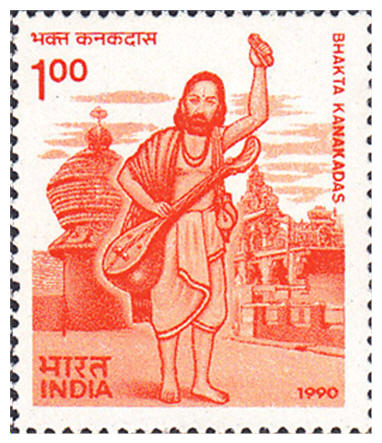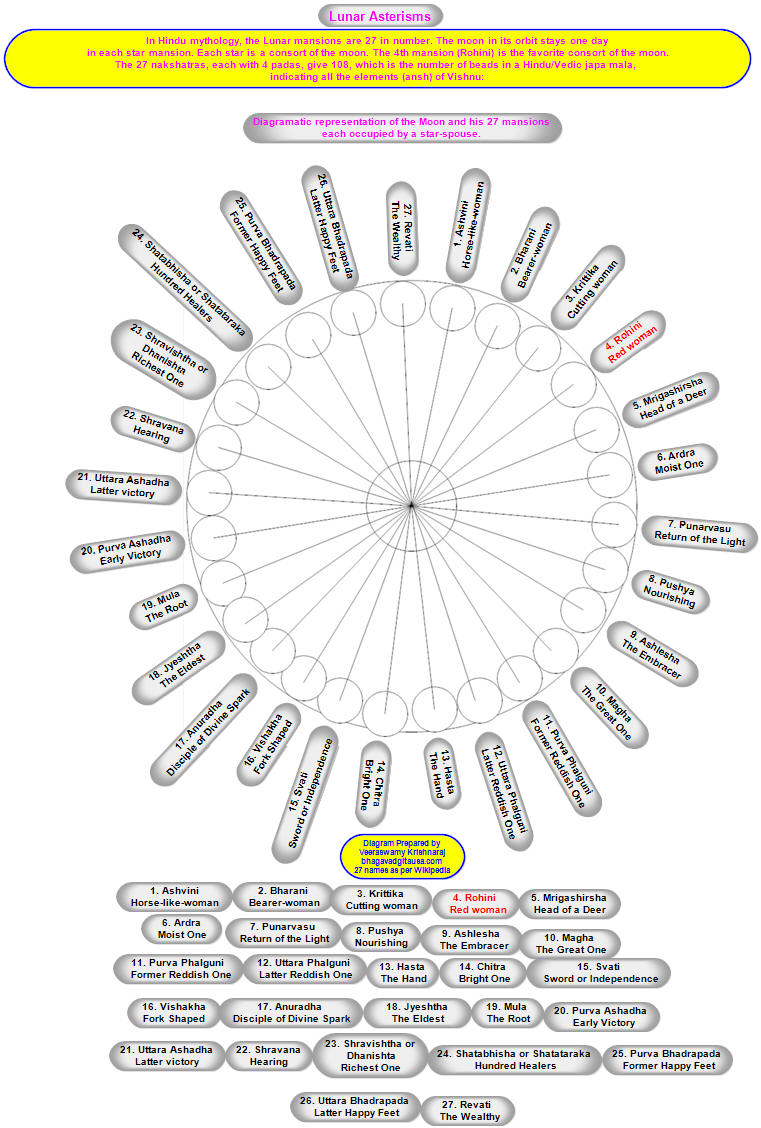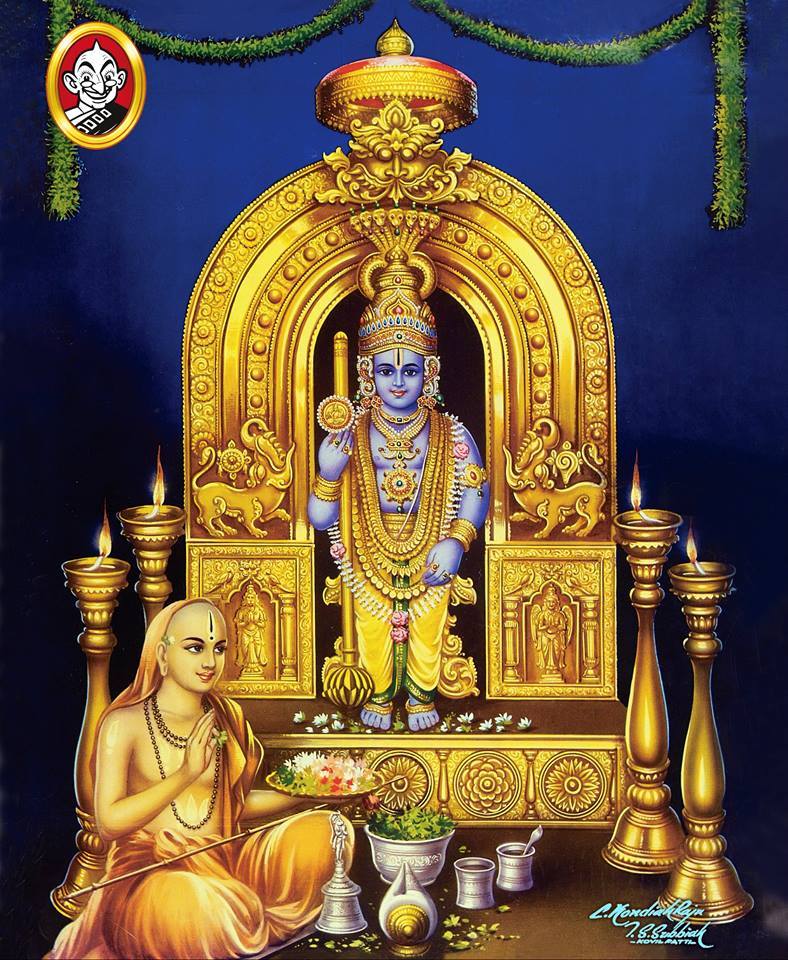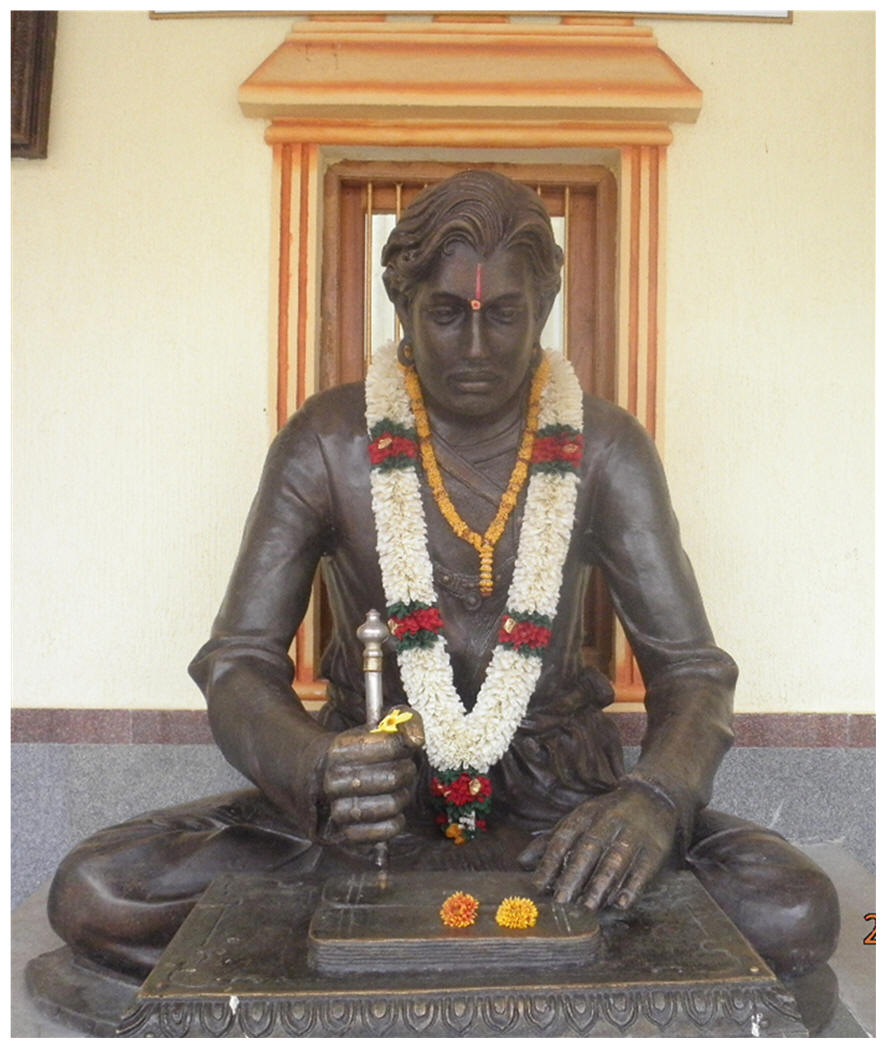Udupi (உடுப்பி)
Udu = உடு = star, Chandran, Moon. Pā
= பா = headman, Chief.
Udupa morphed into Uduppi.
The Moon with 27 houses worshipped Krishna to
expunge the curse at this sacred site. Udupi Krishna is the head of the
27 mansions of the moon and the planets.
Madhavacharya (1238-1317) was born Vasudeva in Pajaka near Udupi and received his initiation at eight years of age. In his writings, he claimed to be the Avatar of Vayu, the son of Vishnu. He was opposed to Sankara's Non-dualism (Advaita) and Ramanuja's Qualified Non-dualism (Visistadvaita). Brahman-dependent individual soul and Brahman are two different realities, not identical with each other. He asserted that liberation is a gift of grace from God. In his earlier years, he tutored on Advaita philosophy. He disagreed with his teacher, left the monastery founded Dualism and went up and down the country advancing his philosophy.
He claimed that Hanuman was the first Avatar of Vayu (Wind god), Bhima, one of the Pandavas of Mahabharata the second Avatar, and he was the third Avatar. He claimed he had a vis-a-vis with Vishnu and beleived he was the mediator between Vishnu and the Dualist votaries of Vishnu, guiding them on the path to Vishnu and Paramapadam, Vaishna heaven.
His philosophy finds its roots in Bhagavadgita 15:16 verse.
द्वाविमौ पुरुषौ लोके क्षरश्चाक्षर एव च ।
क्षरः सर्वाणि भूतानि कूटस्थोऽक्षर उच्यते ॥१५- १६॥
(SanskritLSU font)
dvāu imau puruṣau
loke kṣaraḥ
ca akṣaraḥ
eva ca
kṣaraḥ
sarvāṇi
bhūtāni kūṭasthaḥ
akṣara
ucyate 15.16
mau2 = These; dvāu1 = two; puruṣau3 = Purushas [entities]; loke4 = in this world; [are] kṣaraḥ ca akṣaraḥ5 = the perishable and the imperishable; ca8 = and; eva6 = indeed; kṣaraḥ9 = the perishable; [is] sarvāṇi bhūtāni10 = all living beings--their bodies; [and] akṣara12 = the imperishable; ucyate13 = is called; kūṭasthaḥ11 = the Immutable--Self . 15.16
15.16:
There are these two (kinds of) Purushas (entities) in this world,
the perishable (Ksara) and the imperishable (Aksara). The Perishables are
(the bodies of all) living beings and it is said that the imperishable
is the Immutable (= Kutastha = Soul).
Krishna Mutt in Udupi was his creation and installed the Murti from Dvaraka, Gujarat in 1285 CE.
He died at age 79 in the year 1317 C.E. The Udupi Temple became
very popular after his demise. He was the exponent of Dualism
(Separation of God and man).
The belief is that the idol, worshipped by Rukmini,
was in the bottom of the sea near Gujarat from the ravages of a Tsunami.
A sailor used the statue with accretions as a ballast and sailed out in
the sea. There was a storm at the sea. Madhavacharya by his divine
vision directed the ship to the nearest seaport and by his grace calmed
the seas. He recovered the statue and sang for the length of four miles
to the present location. The songs came to be
dvādaśa
Stotra, which is chanted to this day in the temple.
This statue worshipped by Rukmini, who out of
curiosity visualized Krishna as a child.
Rukmini summoned Visvakarma the celestial architect to make a
statue out of Sālagrāma
stone with the churning pin on the right hand and a wad of butter on the
left hand. Following Rukmini's worship, Arjuna continued to worship the
idol. Later the statue was protected by a heavy layer of Gopīćandana
(Tamil
கோபிசந்தனம் kōpi-cantaṉam
(gōpīcandana.
Yellowish earth used by certain devotees of Viṣṇu
for upright sectarian marks).
The Krishna Shrine has nine portals or windows with
rails through which only the devotees can obtain Dharsan.
The Shrine's South gate stays locked, open only on
Vijayadasami.
Kanakadasa (Servitor of Gold =Krishna) was born in
'low caste.'
Kanakadasa (Kannada: ಕನಕದಾಸ) (1509 – 1609) born Thimmappa Nayak was a poet, philosopher, musician and composer from modern Karnataka. His guru was Vyasaraya Swami. The Brahmin priests did not allow him entry into the temple because they claimed he hailed from a low caste (Kuruba community, Shepherds). Their community served the local king as security men. Their family deity was Adhikesava of Kegenele. He sat behind the temple and sang songs on Krishna. Suddenly one day, Bhu Devi (the earth) quaked, the walls split open, East-facing Krishna (statue) turned west, and Kanakadasa had a magnificient vision of Bhagavan. What man refused, Mother Earth (Bhu Devi) allowed and split open the wall to reveal Krishna to his devotee. Bhagavan and Bhu Devi work in mysterious ways.
That
window is now known as Kanaka Kindi. Years later a monument in his
memory was built and named Kanakana Kindi or Kanakana Mandira.
He sang against the prevailing attitudes of higher
caste Hindus. He composed many devotional songs. He was a staunch
opponent of caste system.
 Government
of India issued a stamp in his honor in 1990.
Government
of India issued a stamp in his honor in 1990.
He anthropomorphized Rice and Millet, with
arguments between them about who was superior.
Rice thought he was superior,
because he was the favorite of the rich upper class people. Millet
(Ragi) was the staple for the poor. Rice was more expensive than Millet
and the staple for the rich. (Kanakadasa came from Millet class.) Ragi
was humble and poor, while Rice was haughty and rich.
They went to Rama for resolution. He ordered them
to languish in jail for six months. Both emerged from jail. Mr. Rice
showed signs of rot, while Mr. Millet was robust as ever and received
blessings from Rama. This is a class warfare as old as time, since
humans became agriculturalists for the first time in Fertile Crescent
and India...
Ragi rhymed with Raghava, the other name for Rama.
(Rice goes with avarice. Rice
has edifice complex. Rice has malice in his heart.
Mice love rice. Rice is not nice
for diabetics. Rice is prejudiced against Millet. Rice is thrice costly.
– Just having fun with rhymers).
Rice stored for a long time showed deterioration,
while Millet stayed fresh for a long time.
He died in Tirupati (1509 – 1609).


